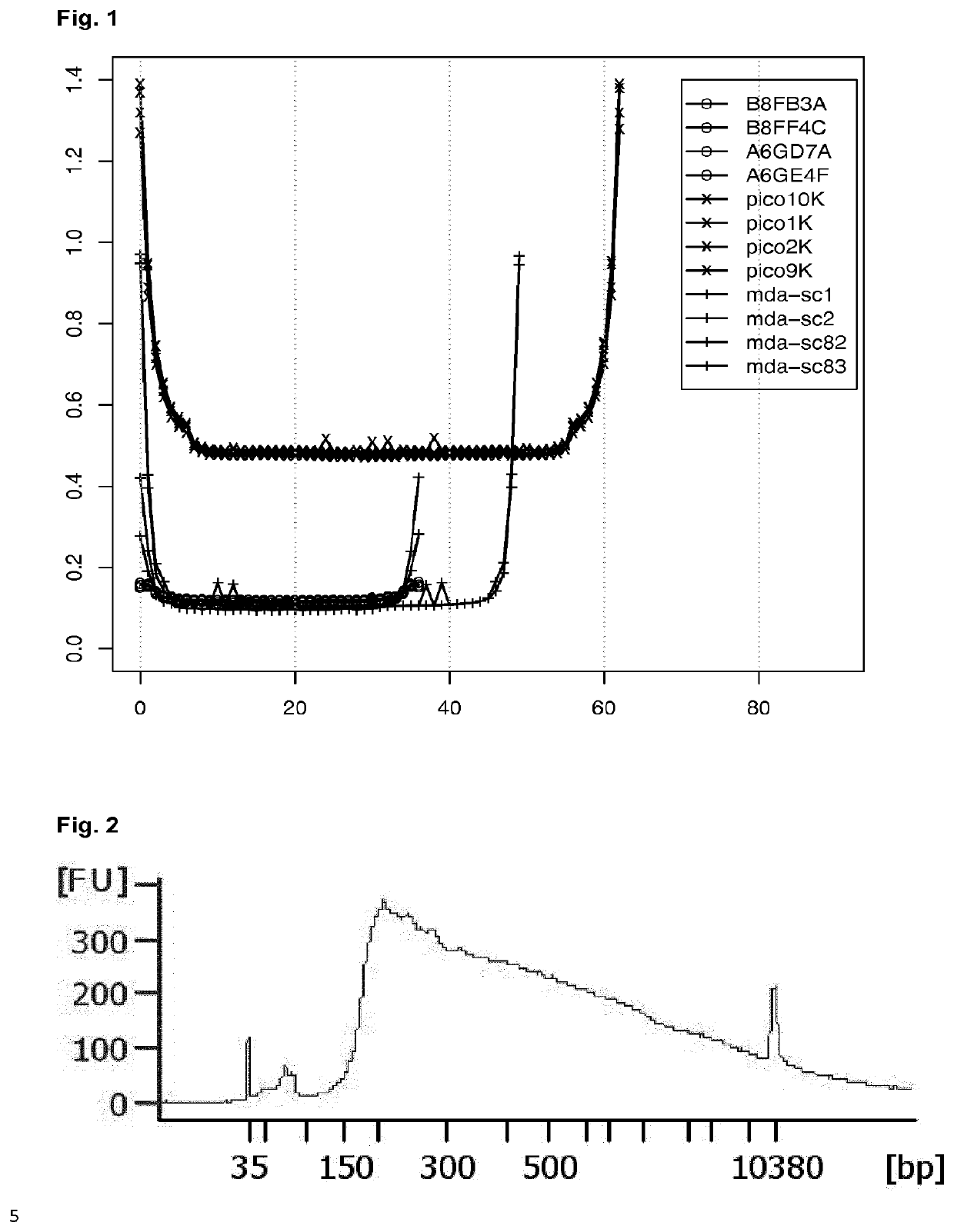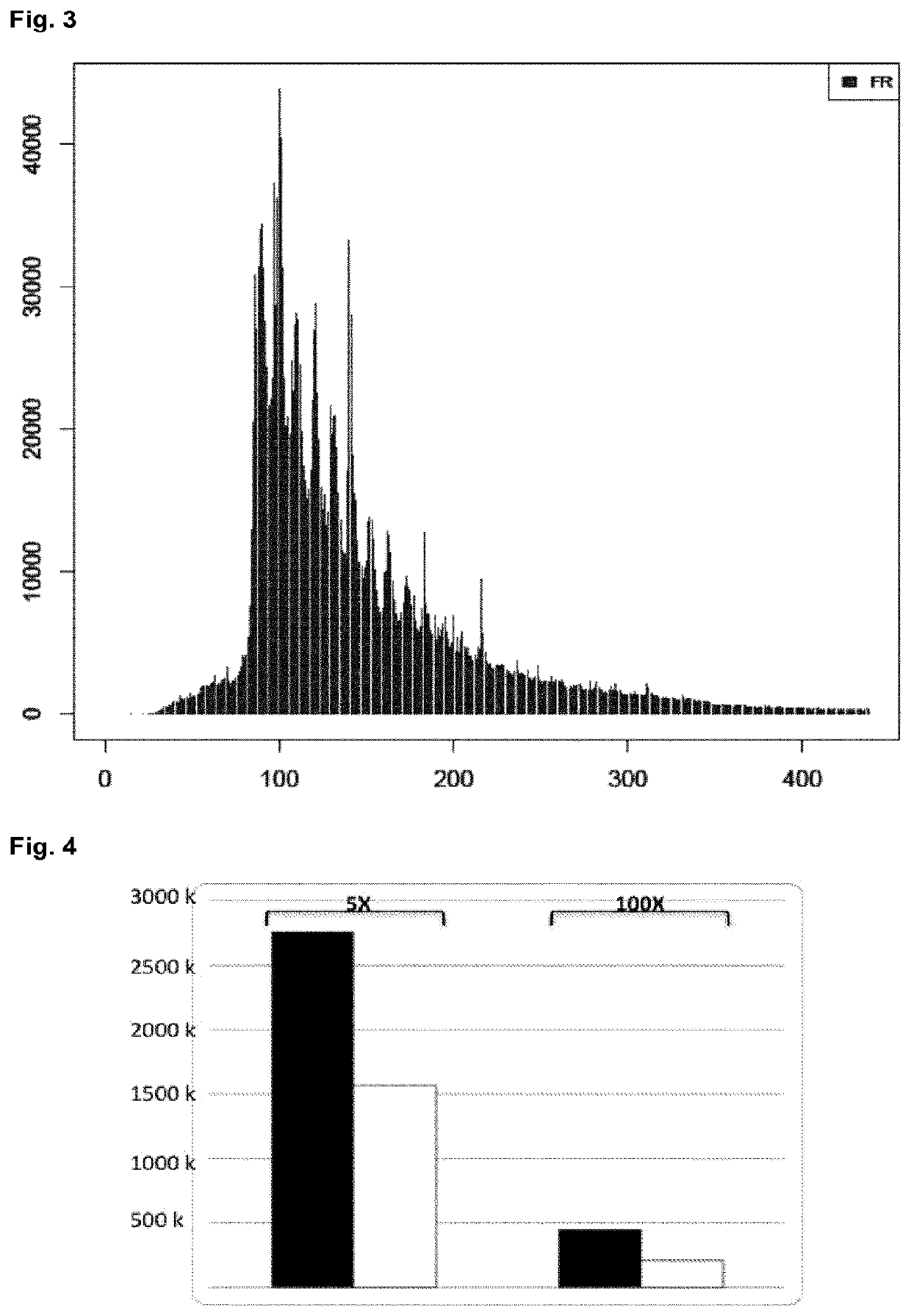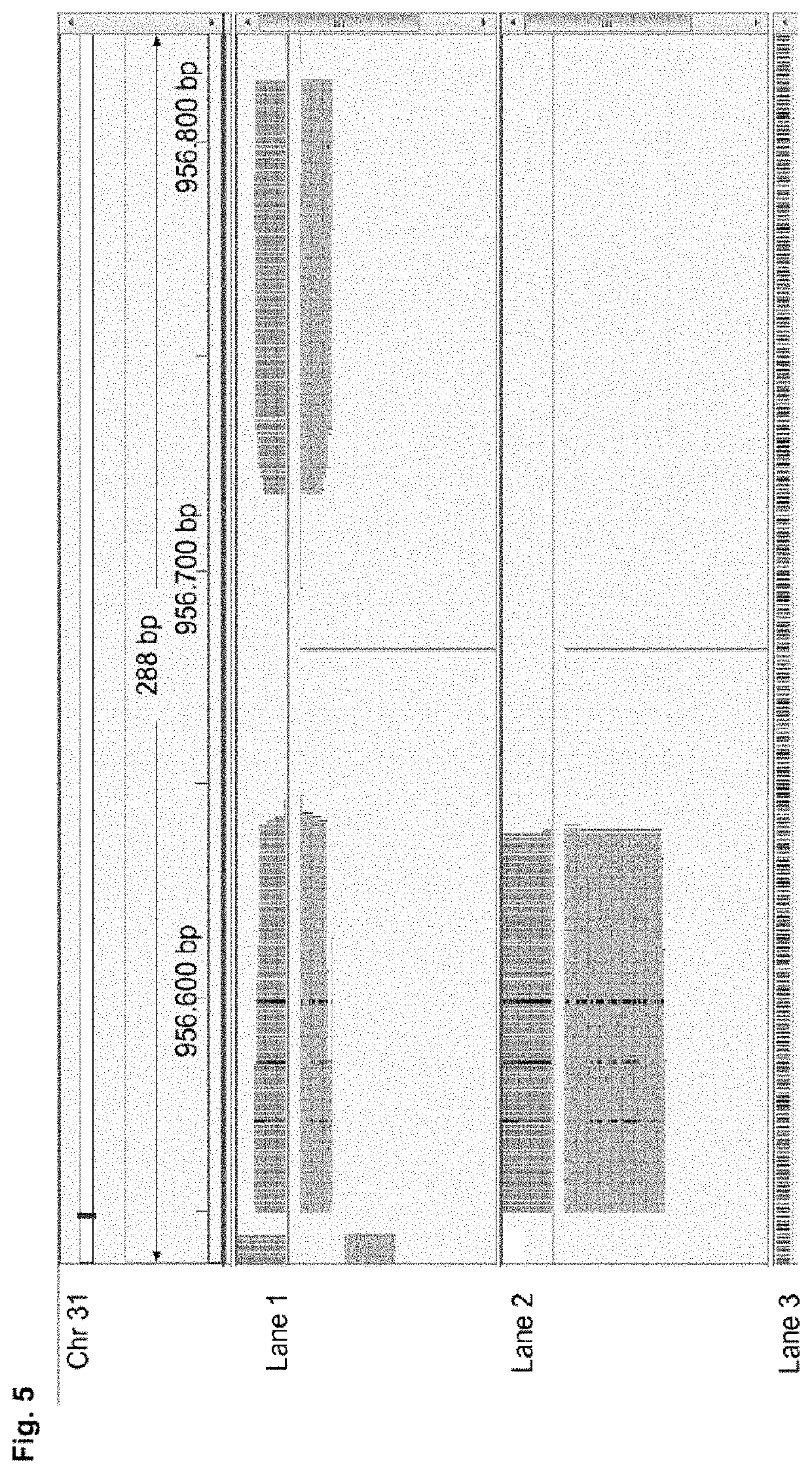High-throughput genotyping by sequencing low amounts of genetic material
a high-throughput, genetic material technology, applied in the field of high-throughput genotyping by sequencing low amount of genetic material, can solve the problems of insufficient detection of rare or population-specific variants or its use in highly diverse species, insufficient detection of rare or population-specific variants, and insufficient detection accuracy of snp-calling from high-throughput massive sequencing data from a single cell, etc., to achieve accurate snp-calling, reduce representation, and maintain genome-wide information
- Summary
- Abstract
- Description
- Claims
- Application Information
AI Technical Summary
Benefits of technology
Problems solved by technology
Method used
Image
Examples
example 1
ification Via Genotyping-by-Sequencing (GBS) in Arabian Horse
[0311]The aim is to determine the genetic diversity within the Arabian purebred horses based on large scale SNP identification using GBS. Hereto, we collected 56 blood samples. DNA extractions were done with puregene kit (Qiagen). Sample concentrations were checked with the nanodrop and fragmentation was checked on agarose gel.
[0312]In silico digestion based on the EquCab2 reference sequence using ApekI was performed using custom Perl / BioPerl scripts and predicted 2,937,656 fragments <=500 bp or 3,766,233 fragments <=1000 bp. This number reflects the efficiency of the genome complexity reduction. However this does not takes methylation patterns into consideration.
[0313]DNA Libraries were prepared as described (Elshire et al. PLoS One. 2011 6(5):e19379. doi: 10.1371 / journal.pone.0019379) with minor modifications. Restriction enzyme ApekI was used to reduce the genome complexity per sample. ApekI is a type II restriction end...
example 2
eduction Improvement of Genome Complexity Using a Selective Primer
[0316]In addition to the above reduced representation library (further referred to as “standard” library) generation using the ApekI restriction enzyme and the sample set of the same 56 Arabian horses, we've reduced genome complexity further by using a selective primer. This selective primer covers the entire common adapter, the 3′ restriction site and extends 2 bases into the insert region. Due to the 2 selective bases at the 3′ end of the primer, only a subset of adaptor-ligated fragments is amplified.
selective reverse primer (5′-3′):CAAGCAGAAGACGGCATACGAGATCGGTCTCGGCATTCCTGCTGAACCGCTCTTCCGATCTCAGCACstandard reverse primer (5′-3′):CAAGCAGAAGACGGCATACGAGATCGGTCTCGGCATTCCTGCTGAACCGCTCTTCCGATCTcommon forward primer (5′-3′):AATGATACGGCGACCACCGAGATCTACACTCTTTCCCTACACGACGCTCTTCCGATCT
[0317]Furthermore, the library preparation was single-end sequenced on a single lane of an Illumina HiSeq2500. Raw sequence reads were proces...
example 3
l and Single Cell Genotyping-by-Sequencing
[0319]A skin biopt of a male horse was taken and cultured in a standard incubator at 37° C. and 5% CO2. Fibroblasts of large T175 falcon flask were cultivated, washed and DNA extracted using the blood and tissue kit (Qiagen). The concentration was checked via the nanodrop and DNA fragmentation was checked on agarose gel.
[0320]From the same cell line, a single fibroblast was used for further downstream processing. The cell was lysed and DNA amplified according to WO2011 / 157846.
[0321]Library preparations were done using PstI restriction enzyme and further processed similar as the procedure in example 1. PstI was predicted to generate 968,569 fragments in the horse genome (The EquCab2 reference sequence) whereas ApeKI 4461178 fragments in total. Since we wanted to maximise the sequencing power, we decided to test the PstI digestion on the horse genome. The PstI enzyme recognises following sequence CTGCA{circumflex over ( )}G and is methylation ...
PUM
| Property | Measurement | Unit |
|---|---|---|
| concentration | aaaaa | aaaaa |
| concentration | aaaaa | aaaaa |
| size | aaaaa | aaaaa |
Abstract
Description
Claims
Application Information
 Login to View More
Login to View More - R&D
- Intellectual Property
- Life Sciences
- Materials
- Tech Scout
- Unparalleled Data Quality
- Higher Quality Content
- 60% Fewer Hallucinations
Browse by: Latest US Patents, China's latest patents, Technical Efficacy Thesaurus, Application Domain, Technology Topic, Popular Technical Reports.
© 2025 PatSnap. All rights reserved.Legal|Privacy policy|Modern Slavery Act Transparency Statement|Sitemap|About US| Contact US: help@patsnap.com



